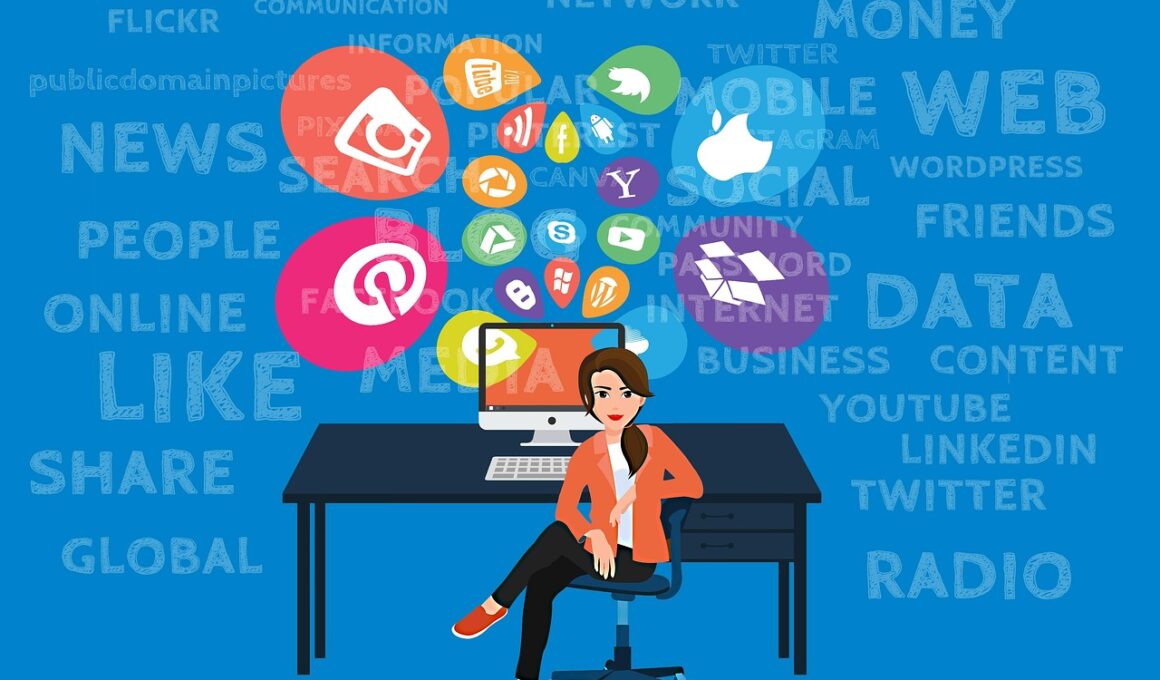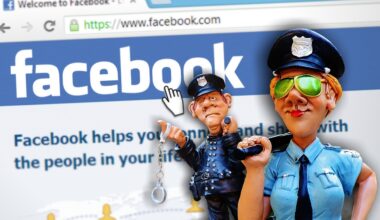How Social Media Amplifies Healthcare Crises: Case Studies and Responses
Social media can be both an ally and an adversary for healthcare providers. This phenomenon has been increasingly evident during times of crisis. Providers face unique challenges, especially in how information is disseminated to both patients and the general public. A crisis can escalate quickly through platforms like Twitter and Facebook, where misinformation spreads at alarming speed. The shared nature of social media means that one incorrect post can garner thousands of shares before anything is done to correct it. The need for rapid response is essential to mitigate damage. Understanding how to effectively communicate during a healthcare crisis is paramount. This involves designing a strategy that specifically addresses public concerns while controlling the narrative. Monitoring social media for mentions and sentiments surrounding the healthcare provider and their services can offer insights into public perception. Additionally, an effective social media policy can help navigate through difficult situations, ensuring responses are well-structured and timely. Lessons learned from past incidents can significantly enhance future crisis response performance. Engaging with stakeholders through social media offers channels for dialogue, creating a more resilient approach to communication.
Learning from Past Healthcare Crises
Examining real-world situations sheds light on how healthcare organizations have successfully navigated crises triggered by social media. For example, during a public health scare, one prominent hospital faced a flood of social media questions regarding vaccine safety. Promptly, they established a dedicated online team to address these inquiries. This approach not only assuaged public fears but promoted transparency. Through regular updates and live sessions, they engaged with their audience more effectively. Another case involved misinformation related to a specific treatment option. The healthcare provider swiftly created content debunking myths, focusing on factual data while encouraging patients to consult with their medical team. They employed both organic posts and paid advertisements to reach a broad audience, countering fake news. A well-executed response plan prevented further escalation. These instances illustrate the importance of strong leadership and clear communication channels amid chaos. Building relationships on social media creates a safety net that can be crucial during crises. Establishing trust prior to any issue provides a solid foundation for crisis management, enabling rapid response and effective communication.
In addition to identifying lessons from past responses, healthcare providers must prioritize training staff in crisis communications. Social media dynamics differ from traditional communication methods. Staff must learn how to reply to comments and questions while maintaining a professional demeanor, especially under pressure. Regular training exercises can prepare them for real-world scenarios, ensuring they communicate accurately and empathetically. Building a culture of collaboration between clinical and communications teams can streamline crisis responses. It results in timely and relevant communication aligned with organizational goals. Implementing a simulation approach would increase preparedness, where staff can practice responses to typical crises. Additionally, assigning specific roles during a social media crisis ensures accountability. Following up post-crisis to analyze performance is crucial. Feedback loops help in identifying areas of improvement for future scenarios. Comprehensive lessons learned sessions provide invaluable insights into what strategies worked and what didn’t. Moreover, it is essential to maintain a tone that reflects the healthcare provider’s brand image while demonstrating compassion. In the age of social media, healthcare providers that prioritize training and preparation are more likely to succeed in crisis management.
Navigating Misinformation in Real-Time
In the age of information overload, combating misinformation on social media becomes essential during healthcare crises. The rapid spread of inaccurate information can overwhelm a healthcare organization. For instance, during a recent viral outbreak, false information circulated about transmission methods. The healthcare provider quickly initiated a campaign addressing misconceptions, utilizing infographics and video content for clarity. This real-time response was crucial in maintaining public trust and encouraging individuals to seek verified information. Partnering with influencers and local community leaders improved outreach effectiveness. Educational interventions were developed to inform the public about the situation comprehensively. This method of engaging advocates mitigated the spread of false narratives. Continuous monitoring of social media channels for misinformation allowed them to counteract harmful content swiftly. Through this systematic approach, they cultivated an environment where accurate information prevailed. The importance of empowerment and education cannot be understated. It fueled public engagement by providing them with necessary resources and involving them in the conversation. Encouraging dialogue enabled a two-way exchange of ideas, furthering understanding and awareness among the audience, ultimately contributing to better community health outcomes.
Emphasizing the role of empathy and humanity in healthcare crisis communication is essential. People facing health-related issues are often vulnerable, requiring understanding and reassurance. A compassionate tone represents the healthcare provider’s ethos. It can influence how audiences perceive their messages on social media. Sharing personal stories from healthcare workers or patients can establish a connection with the public. Testimonials can humanize the situation, creating a narrative that resonates with followers and making the crisis feel more manageable. This practice promotes transparency and fosters trust between the provider and its audience. Acknowledging the emotional burden during crises gives voices to those affected. Making space for these voices on social media validates experiences and creates a supportive community. Including mental health resources within the communication strategy demonstrates a commitment to patient wellbeing. Encouraging individuals to share their feelings and seek advice reflects an understanding of their emotional landscape. Moreover, partnerships with mental health organizations can amplify these efforts. Building a compassionate approach creates an opportunity for organizational growth, allowing healthcare providers to strengthen community ties, offering solace and hope during challenging times.
Social Media Policy and Crisis Preparedness
All healthcare organizations should have a clear and robust social media policy in place. This policy serves multiple purposes, especially in crisis situations. By outlining specific protocols for responding to negative posts or misinformation, healthcare providers can ensure a unified response. Successful examples often include delegated responsibilities, identifying spokespersons during a crisis. Training staff on the policy promotes adherence and strengthens organizational integrity. Regular updates are necessary to reflect changes in the social media landscape and to incorporate lessons learned from previous crises. The policy should include guidelines for addressing external communications while maintaining sensitivity to patient privacy. Furthermore, cultivating relationships with social media platforms can enhance collaboration during emergencies. These collaborations may lead to quicker response times to flagging harmful content. In addition, healthcare organizations should stay informed about emerging trends in social media usage for effective stakeholder communication. Commitment to best practices signifies a proactive approach rather than a reactive one. Incorporating feedback mechanisms assists in continuous improvement. Encouraging staff to seek input allows organizations to adapt, improving future crisis management efforts and establishing credibility within their communities.
Maintaining a balance between transparency and responsibility in social media communication is essential for healthcare providers. Disclosing information should never compromise patient confidentiality or safety. Navigating this balance becomes crucial, particularly during emergencies, where needs can vary. Legal counsel should be involved in formulating guidelines to protect both patients and healthcare institutions. Effective communication strategies incorporate disclaimers regarding the limitations of online information. By educating the public on the role of healthcare professionals, providers cultivate a better understanding of what can be expected online. Additionally, emphasizing that social media should not replace professional consultations can minimize potential misinterpretations. Training staff on legal implications helps mitigate risks during crisis responses. Accountability can also be enhanced by setting guidelines for external communications with stakeholders during crises. This ensures a uniform message is conveyed. Engaging patients within these discussions promotes a collaborative atmosphere, illustrating a genuine commitment to their care. Creating a foundation of trust through responsible communication fosters stronger relationships in the healthcare community, ultimately leading to better health outcomes. More importantly, organizations that prioritize ethical considerations during a crisis can emerge stronger, with enhanced reputations and loyal patient bases.
Conclusion and Future Directions
In conclusion, social media plays a dual role in healthcare crisis management, amplifying both challenges and opportunities. As organizations continue to navigate this complex landscape, embracing technological advancements while adhering to ethical standards will be crucial. Increasingly, healthcare providers are recognizing the need for well-defined crisis communication strategies that incorporate social media as a primary tool for engagement. Looking ahead, as the digital space evolves, professionals must be alert to shifts in audience behavior and preferences. Regular assessment of social media policies will contribute to maintaining a relevant and responsive approach. Ongoing training will ensure that staff is equipped with the latest knowledge to respond effectively during crises. Additionally, incorporating feedback loops into communication strategies post-crisis will bolster resilience and enhance institutional learning. Building relationships with other organizations can augment preparedness and foster collaboration. Investing resources into monitoring social media health can provide valuable insights that can guide future interactions. Ultimately, a proactive approach rooted in empathy, transparency, and accountability will redefine how healthcare providers manage crises on social media. Organizations that commit to refining these aspects are likely to thrive in an increasingly interconnected world.


